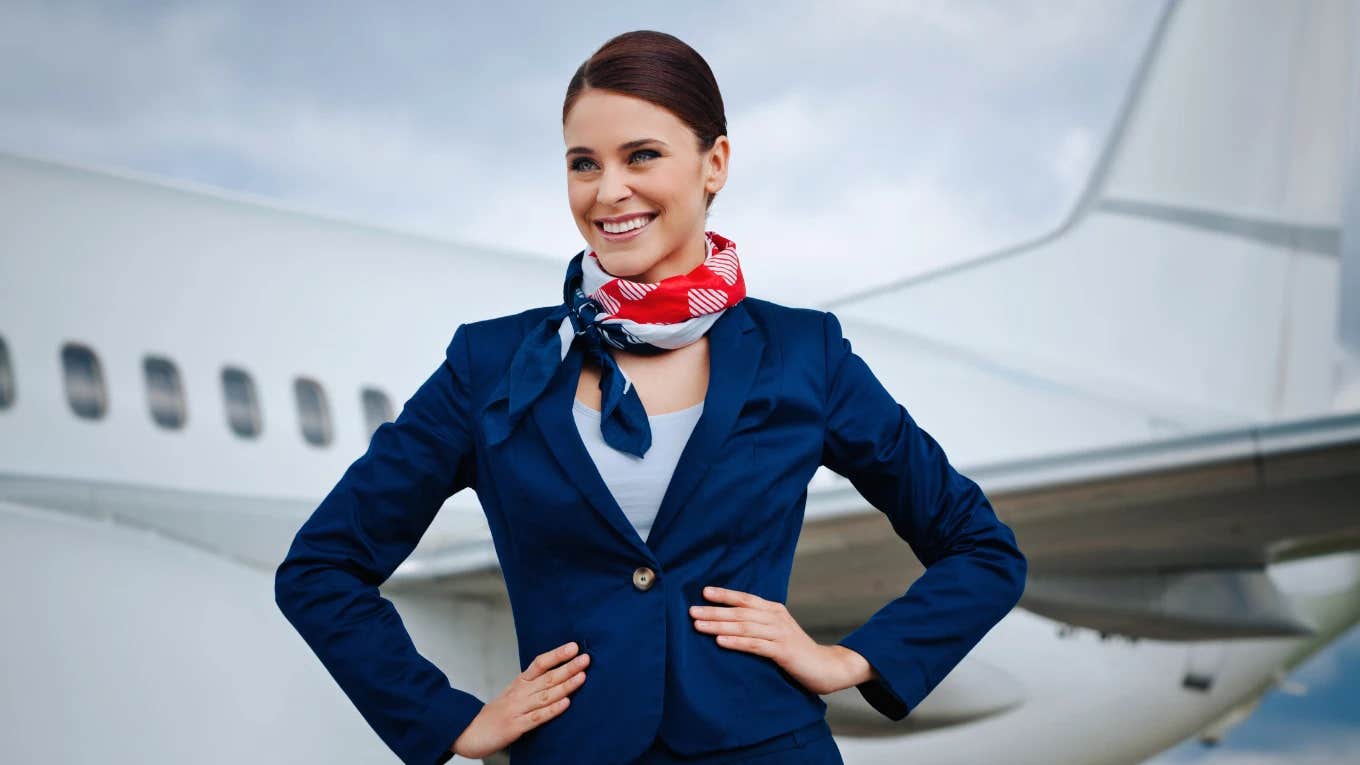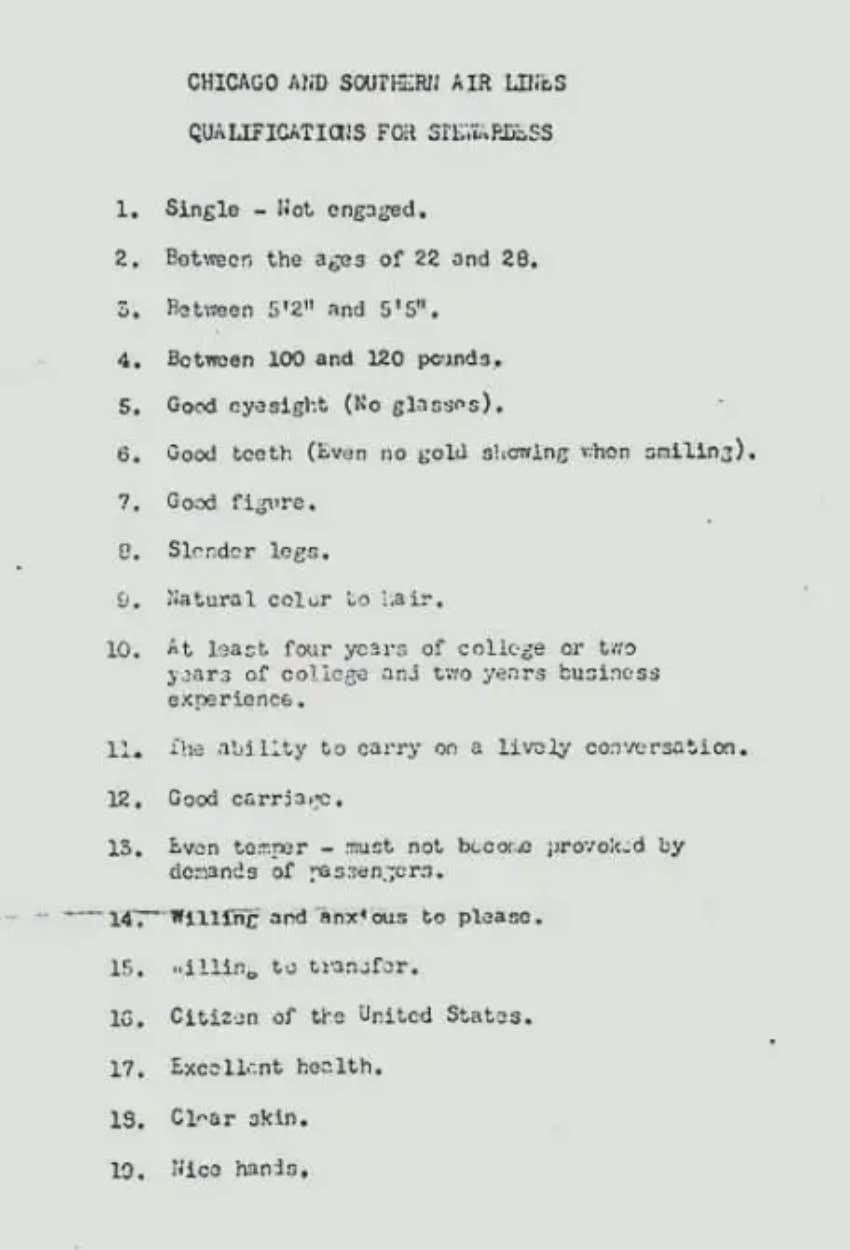The Job Description For A Flight Attendant In 1954 Sounds Like A Personals Ad Gone Very Wrong
It's all about looks and nothing about skills — and don't forget to be "anxious to please."
 izusek | Getty Images Signature | Canva Pro
izusek | Getty Images Signature | Canva Pro It seems hard to believe in today's era of nightmarish travel, but flying on a plane used to be a high-class experience — one that people actually dressed for as if they were going to dinner and a show. With that came an entirely different job for flight attendants, one that is often remembered as glamorous. An old job ad for stewardesses, however, gives a very different view.
A 1950s flight attendant job description circulating online reads like a very creepy personals ad.
High-flying hairdos, stylish uniforms designed by famous designers, flair, panache — being a flight attendant was once a super glamorous profession that has even been credited with shifting cultural mores about gender in the 50s and 60s.
But there's always a bit of revisionism in history, and a flight attendant job description that's been making the rounds online shows the heyday of air travel was no exception. The job ad, said to be from the 1950s, is very light on skills but heavy on the old-fashioned expectations of women.
The ad has age, height, and weight requirements and forbids candidates from being married or engaged.
The ad was for flight attendants for Chicago and Southern Air Lines, a major carrier in the 1940s and 50s that merged with Delta Airlines in 1953. Nearly every requirement in the ad runs afoul of the standards of today (even after we've apparently decided as a country to regress back to the 1950s again). In fact, many of its requirements would be illegal these days.
 Reddit
Reddit
For starters, it requires applicants to be single. They can't even be engaged — lest the male customers be made to feel they can't have their way with the stewardess, presumably. It also restricts the job to those under 28 and no taller than 5'5". You can practically hear the lawsuits being filed.
But it doesn't stop there. Have you had dental work? Sorry, lady. Wear glasses? Scram, four eyes. Oh — and if you don't have "nice hands," whatever that means, consider becoming a teacher or a nurse, the other two acceptable jobs for women at the time.
The ad also requires women to be 'anxious to please' — which fueled notorious levels of harassment at the time.
The physical requirements are cringe enough, but the others start to feel downright nefarious, like the ones that require women to have an "even temper," be "anxious to please," and "must not become provoked by demands of passengers."
This makes you wonder what sort of demands passengers would be making that would be construed as a provocation. It was exactly what you think it was, of course. Airline ads at the time were openly degrading toward flight attendants, referring to them as "working girls," a euphemism for prostitutes, and depicting them as, essentially, call girls for male passengers.
One Redditor who said her mother worked in the 1960s as a stewardess, as they were then called, described the job as "oppressive," saying "there was no safety from sexual harassment and assault," which was common.
And, of course, only white women were hired for decades. That changed in 1957 when Ruth Carol Taylor filed complaints with New York labor authorities and was hired by Mohawk Airlines as the industry's first Black flight attendant after previously being rejected by Trans World Airlines (TWA). Her case led to TWA hiring their first Black flight attendant the following year.
By the mid-60s, many more flight attendants had had enough. A series of strikes and discrimination court cases ensued after the Civil Rights Act of 1964 was passed, including one brought by a man, Celio Diaz, Jr., who wanted to be a flight attendant (the job had previously been the province of mostly gay men in the 30s and 40s). His case led to the redefinition of the job as being about passenger safety rather than, you know, letting men "fly you" as the ads suggested.
By 1967, the Equal Employment Opportunity Commission had ruled against the airline industry's discriminatory practices, though it took decades for the industry to fully change its ways. One landmark class action lawsuit, filed in 1970 by flight attendant Mary Pat Laffey Inman against Northwest Airlines, wasn't officially settled until 1985, and flight attendants were still subject to weigh-ins as recently as the 1990s, in fact.
Today, of course, flying is a nightmare for passengers and flight attendants alike, but Laffey Inman, who today is 86, thinks she has a solution. She told The New York Times last year, "I’d like someone to pass a law to widen the seats. That’s one of the reasons there’s so much tension." Hear, hear!
John Sundholm is a writer, editor, and video personality with 20 years of experience in media and entertainment. He covers culture, mental health, and human interest topics.

